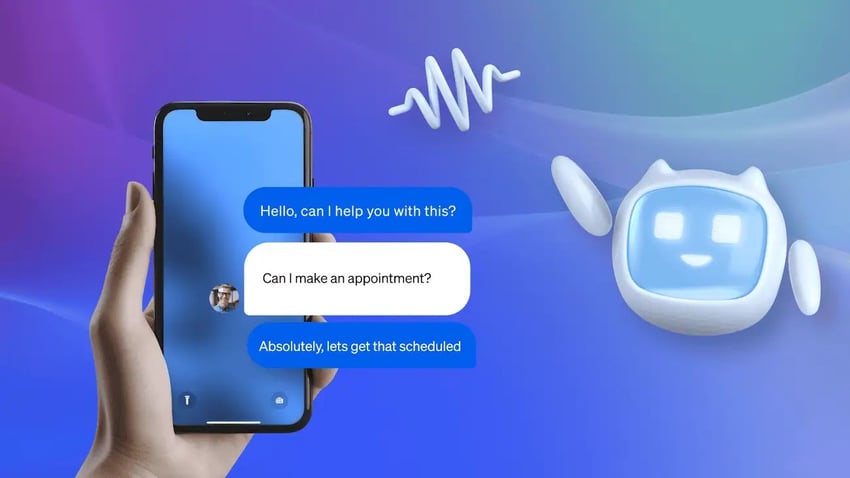Although Mahatma Gandhi didn’t dwell in traditional business, one of his quotes resonates timelessly in the business world. He said, “The best way to find yourself is to lose yourself in the service of others.”
Simply put, if you’re all about your customers and the service you deliver, you’re working toward your own purpose and satisfaction, too. It becomes personally rewarding for your teams to ensure customers have the best experience.
The majority of companies intend to ingrain such ideologies into their processes and people. However, due to the lack of a structured customer experience (CX) program, they’re far from successful.
A CX maturity model provides companies with a roadmap for making improvements in their people, processes, and platforms. It enables leaders to build workflows that not only delight their customers but also demonstrate how seriously these leaders take their customers’ experiences.
What Is CX Maturity?
CX maturity is the level of readiness and capability an organization has to deliver exceptional CX consistently. It’s a model that analyzes CX deeply within a company’s culture, processes, and decision-making.
Such models reflect on a company’s current standing and guide future CX investments. Contact center leaders use them to guide improvements in workflow designs and processes, consistently making them more customer-centric.
A highly mature company doesn’t treat CX as a one-off project or a single department’s job. Instead, customer-centric thinking is woven into everything from product design and marketing campaigns to frontline support and back-office policies.
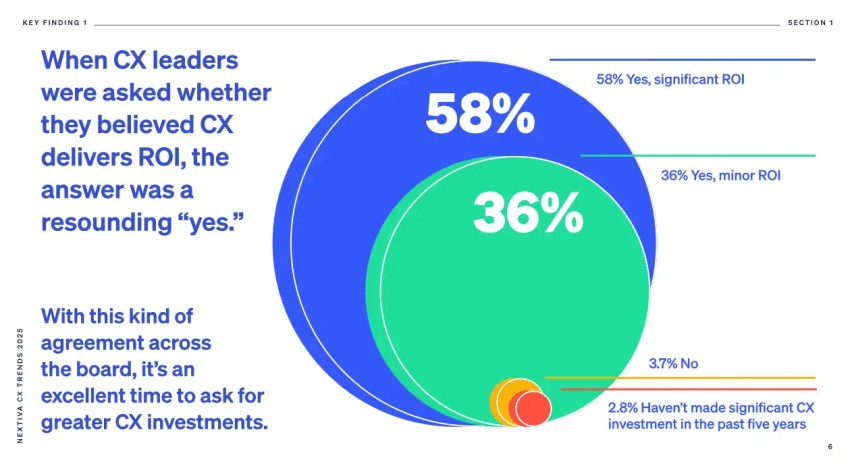
Where does your CX strategy stand with AI?
Take the AI Maturity assessment to get personalized recommendations on how to enhance your CX.
Why Is CX Maturity Important?
When markets are crowded, companies are quick to remain competitive with their products and prices. CX acts as a differentiator for such companies to draw customers in, not only for the product or service, but for the overall experience of it as well. The CX maturity model caters to companies like these, and it sets them apart in the following ways.
Become a competitive advantage
CX can be hyper-personalized. With the right CX tools, your team can capitalize on this and create a seamless experience for customers. And since these experiences are tricky to replicate, it makes them unique.
It’s no surprise that more than two-thirds of companies compete primarily on CX. Not only does it attract customers, but it also creates a moat for your business, which others may struggle to build. Logically, building a CX moat makes sense because it can generate 5.7 times more revenue than competitors who offer a subpar CX.
Build customer loyalty
Loyal customers don’t turn their backs on a business unless provoked. Loyalty is a quality that customer-focused brands cultivate through the experiences they offer. Typically, when a company solves a customer query and gives that customer a good experience, the result is customer satisfaction (CSAT), which can translate into customer loyalty. However, customer loyalty doesn’t occur after only one or two positive experiences.
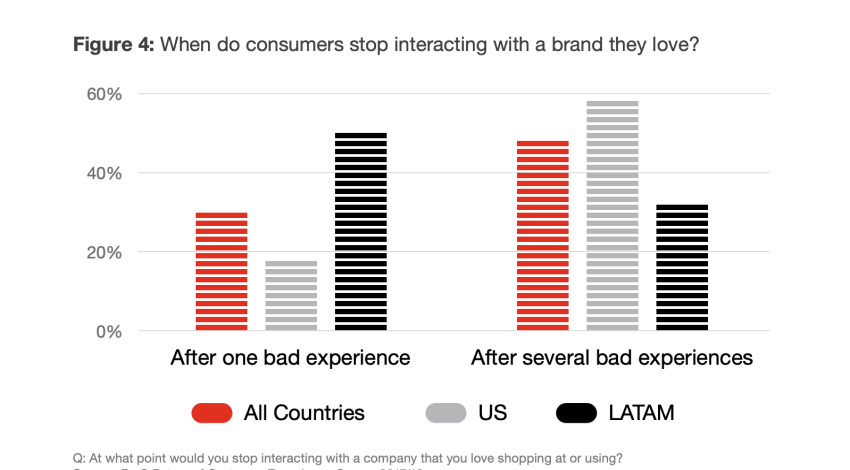
This is a quality that develops when you are consistent in how you engage your customers every time they interact with your business. They remember how you make them feel, so when they experience the same positive feeling repeatedly, it translates into a sense of loyalty. Moreover, loyal customers are likely to share these positive experiences socially, amplifying word of mouth for your brand. According to research by Esteban Kolsky, 72% of customers will share a positive experience they’ve had with six or more people.
A good CX maturity program will help you design such an experience methodologically, making it easier for your team to scale.
Grow revenue
Happy customers tend to buy more. They are also more likely to become returning customers. According to a PwC study, 43% of customers would be willing to pay more for greater convenience, while 42% would do so for a friendly and welcoming experience. These were the top criteria that customers desired in their experiences.
This is a clear indication that experience directly correlates with revenue. When your CX improves, it brings with it the opportunity to command higher prices.
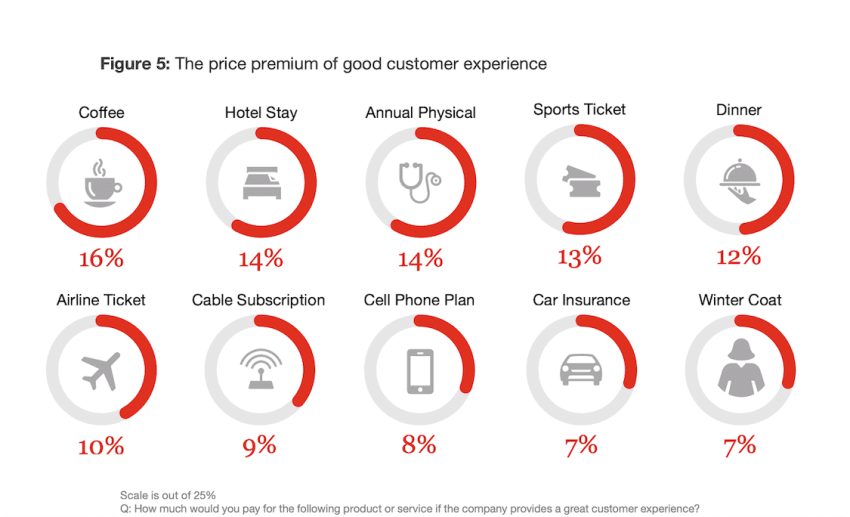
Although these surveys provide strong logic to invest in a CX maturity program, the decision remains in your hands. However, investing in CX has proven to deliver a drastically positive return on investment (ROI) according to McKinsey. The study found that CX increased sales revenue by up to 7% and profitability by up to 2%.
Increase operational efficiency
A mature CX program often goes hand in hand with streamlined workflows, integrated systems, and proactive service. This reduces costs and improves internal productivity.
For example, if you fix broken touchpoints and eliminate sources of customer frustration, you’ll prevent a lot of avoidable contacts and fire fighting. Customers won’t need to call repeatedly about the same issue if it’s solved right the first time. This reduces the burden on your support teams and lowers cost to serve.
High CX maturity programs usually integrate customer data across systems. This helps avoid wasting time going back and forth between systems to get the correct information. Around 81% of CX leaders agree that consolidating customer data into a single record or system would improve CX.

Improve organizational agility
Being customer-centric rewards you with opportunities to adapt to shifting audience preferences and their mindsets. It keeps you up to date with the latest trends in customer expectations, helping you to optimize processes and systems for optimal outcomes.
Your team experiences more agility as they learn precisely how to deal with changing customer preferences. AI-powered systems make your team more agile by analyzing customer communication in real-time and suggesting the required inputs.

Common Levels of CX Maturity
Every organization falls somewhere on the CX maturity spectrum. The labelling of each level differs from company to company, but most organizations use the following headings to describe each stage of their CX maturity.
1. Investigation
This is level one, where organizations explore CX in an unstructured manner. They may have their pockets full of customer feedback, but it stays siloed and far from anyone’s consideration. Any CX effort in this stage is reactive.
There’s no formal owner of CX, which is why there is no concrete CX vision, and companies view CX as a transactional issue to resolve rather than a holistic journey to manage.
Here, it’s possible the company would be inconsistent in improving CX or measuring it. Overall, there’s less awareness among the team members.
If your company’s at this stage, it’s a good idea to investigate your current approach to CX and collect baseline feedback for executive buy-in in order to move forward.
2. Initiation
At level two, organizations initiate a more structured CX effort. There is a CX team or leader identified, even if informally. Data flows across systems through interconnected technology, eliminating silos.
A business can choose to introduce net promoter score (NPS) tracking, CSAT, or a customer effort score (CES) at this time. It’s easy to get funding, as stakeholders see the value that CX drives.

Some companies place CX maturity at level two because they have transitioned from a purely reactive approach to planning and improving CX. The tricky part here is maintaining momentum while they improve CX strategically and consistently.
3. Mobilization
Level three is where CX efforts gain traction and expand across the organization. At this stage, companies have a formal CX program with a clear mandate and resources. They don’t just collect feedback, they also act on it post-analysis.
Their broader cross-functional collaborations increase as more departments contribute toward improving CX. The culture shifts toward customer-centricity. Here, leaders expect a lot of feedback to be readily available for strategic decision-making.
Stakeholders also begin to take an interest in the customer journey as they highlight every touchpoint from the initial inquiry to the final purchase. This allows them to identify the common bottlenecks that prevent customers from having a memorable CX. To get a complete overview, professionals look at both loyalty and operational metrics.
4. Scaling
This is the stage where the organization weaves CX into its DNA. CX is integrated into enterprise-wide processes, and customer insights shape strategy, policies, and workflows at all levels. Companies at this maturity level have strong executive sponsorship. They have someone with a strong CX background in a senior position.
At this level, businesses invest heavily in advanced CX capabilities, like journey analytics or the predictive modeling of customer behavior. Moreover, several business units add omnichannel integration to support the customer base and improve convenience. Overall, the innovation of CX becomes more systematic as companies run structured A/B tests, pilots, and various other practices.

5. Optimization
CX becomes a true competitive advantage and a source for continuous innovation at the fifth level. Real-time customer data and design-led thinking support this innovation to improve CX, and it inspires companies to build their identity around it.
The focus on a proactive and personalized experience continues to increase. At this stage, organizations invest heavily in systems that enable the delivery of such personalization. Companies develop labs and programs to test new CX concepts, enabling them to maintain their competitive edge in the market.
CX metrics are tied closely to financial outcomes. This link is well-understood and leveraged at level five. However, it’s difficult to get to this stage. According to a study, “Only 9% of respondents said their business has made it all the way to the mature stage: having deployed AI for numerous CX use cases.”
Take the AI Maturity Assessment
In just 5 minutes, get your personalized score and recommendations to move forward with AI.
The Core Competencies of CX Maturity
To advance through the maturity stages described, organizations must develop specific core competencies.
Align and sustain
This requires establishing the leadership, vision, and governance needed to drive CX forward for the long haul. This core competency involves securing executive buy-in and ensuring that everyone is aligned in their approach to delivering a consistent CX.
It also includes having a clear CX vision that ties to brand values, a strategy with measurable goals, and defined governance structures, such as a CX steering committee or clear accountability for CX initiatives.
Essentially, it asks:
- Is there strong leadership and alignment on CX?
- Is focus sustainable over time?
At a basic level, an organization needs a designated CX leader or team with executive support. This links their CX strategy to their business goals, assuming that the leadership has agreed on what the CX should achieve.
Prudential Financials runs quarterly Voice of the Customer calls to improve their CX. In these calls, all business leaders come together quarterly to discuss what customers are saying and the actions being taken in response.
Align and sustain is about leadership commitment and structural support for CX.
Enlighten with insights
The goal of this competency is to truly understand customers, derive insights, and share them across the organization. It stands as a robust voice for the customer system. In later stages, the system matures to include customer journey analytics and sentiment analysis of feedback.
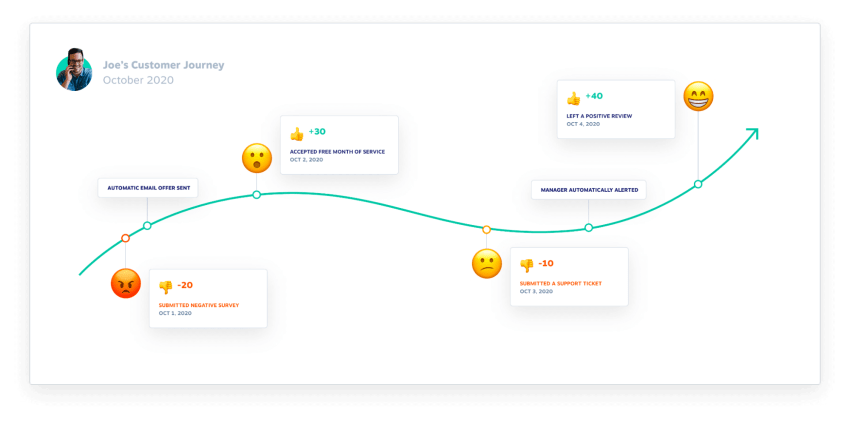
This helps gather data, but it can be tricky to turn this data into insights that the company can then apply to make informed decisions.
CVS Health’s Enterprise CX VP, Srikant Narasimhan, presents a tangible example and says, “You can’t show up as a company if you aren’t talking about your customers the same way.” He emphasizes the need to unify customer data and share insights across the organization to develop a common understanding.
An organization should look at operational data in conjunction with experience data, as it shows what operational events influence CX and how.
Activate the organization
The goal here is to engage the entire company to act on CX insights and deliver a better experience. The term activate in this context means that everyone is given a specific role.
A mature CX company ensures that all departments understand their role in contributing to CX and are actively involved in improvement efforts. This core competency breaks down silos and addresses the resistance to evolution, which can be challenging to overcome as an individual. However, as a team, it’s possible.
Ultimately, this core competency enables unified execution.
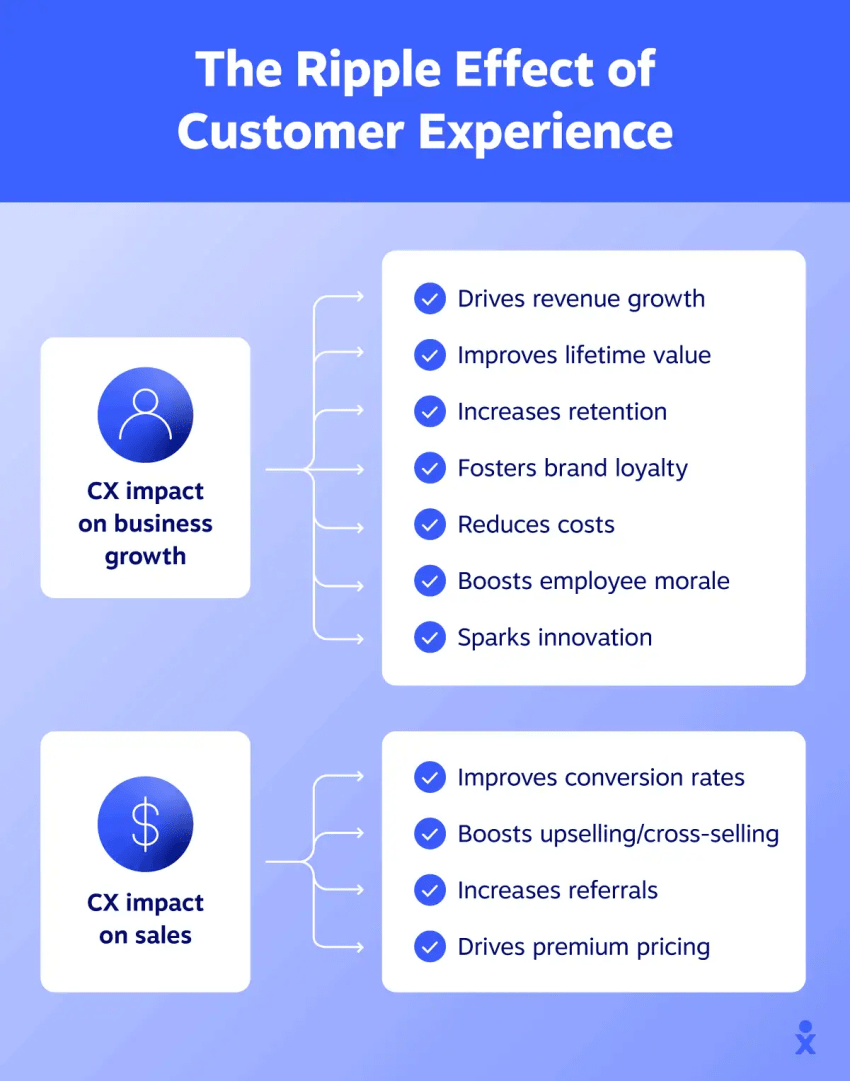
Respond with action
This closes the loop between customers and the business. Enlightening and activating aren’t sufficient if a company cannot demonstrably improve CX and then communicate those improvements back to its customers. This core competency is essentially the practice of continuously turning insight into improvement. Interestingly, this is one of the weakest areas in several companies.
At a customer level, organizations deploy closed-loop feedback processes. If the NPS score of a customer is low and there’s a negative product rating, a contact center agent will ideally reach out to acknowledge this. They may then be able to solve the issue and update the customer.
Internally, it’s all about translating insights into initiatives. Organizations maintain an action log to track the CX improvement backlog, assigning tasks accordingly and updating their statuses.
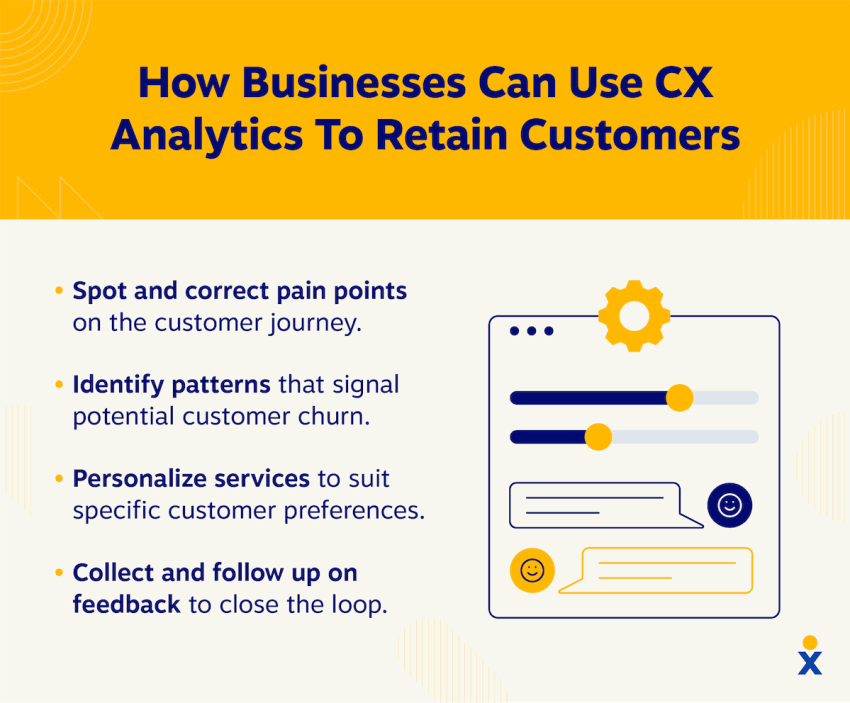
Realize value
This is about proving the ROI and business impact of CX efforts. It focuses on analytics and their alignment with business, primarily financial outcomes. This isn’t easy, and around 75% of CX programs (according to Topher Mitchell, Qualtrics in conversation with Jim Tincher, Heart of the Customer) don’t show a clear connection to business value.
The goal here is to develop clear metrics and KPIs to link CX with business development. It’s also about building a business case for CX upfront and communicating those values back to organizational stakeholders.
Pete Jacques, a Forrester Principal Analyst, remarked that proving the value of CX is the biggest challenge for leaders, and new tools (like AI) are emerging to help connect the dots.
Disrupt with design
This isn’t about just making incremental tweaks, but also about taking a proactive, bold approach to designing future experiences that differentiate a company’s brand. Organizations that excel in this area leverage customer-centric design practices to disrupt the status quo and often lead their industry in CX innovation.
Not all CX teams include design talent or authority over product or service design. However, the best professionals realize they don’t necessarily need a formal design team within CX; instead, they partner with existing design, product, or innovation teams to integrate customer insights into their design processes.
The idea is to ensure that new experiences cater to customer needs and are incorporated based on customer feedback.
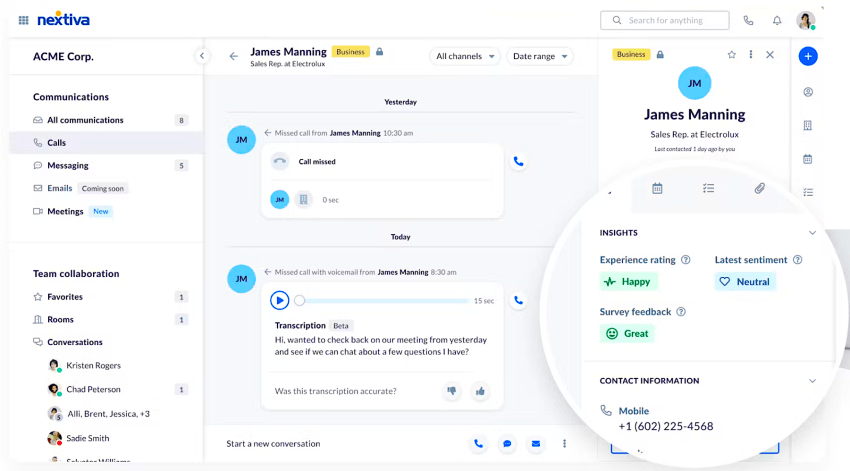
How to Assess Your CX Maturity
Before you can improve, you need a candid view of where you stand. Conducting a CX maturity assessment will highlight your strengths and identify gaps across the core competencies and maturity levels we discussed.
CX maturity assessment checklist
Below is a checklist of the approaches required to assess your CX maturity.
- Internal self-assessment: Review your current CX practices and rate yourself against a maturity model. Use a structured tool or questionnaire, like the self-assessment that Qualtrics XM Institute offers on its website. Rate your organization on key areas, like leadership alignment, customer insight processes, cross-functional engagement, feedback loops, metrics, etc. Most importantly, be honest and base your assessment on evidence, not wishful thinking.
- Cross-functional stakeholder interviews: Don’t make the assessment a CX-team silo exercise. Interview leaders and stakeholders across different domains. Ask how they use customer feedback in their decisions, what CX issues they see, and how well the company supports them in delivering good CX. This not only uncovers blind spots but also engages those stakeholders in the journey of building buy-in.
- Map customer journeys and pain points: Conduct internal workshops to identify and map key customer journeys. Identify pain points and gaps in each one. For example, you may find that the handoff between sales and onboarding is a weak link, resulting in customer frustration. This mapping helps assess the maturity of your processes and identifies areas of friction.
- Audit feedback loops: See how your organization collects, shares, and uses customer feedback. Are you running regular CSAT/NPS surveys? Do you analyze customer support tickets or reviews for insights? What happens with the feedback you receive? Audit whether you close the loop with customers and whether feedback is systematically driving changes.
- Benchmark key metrics: Take stock of your current CX performance metrics, such as the NPS, CSAT, the CES, churn rate, loyalty, and retention rates. This will give you a quantitative baseline. Also, note any business outcome metrics that are relevant. High-maturity organizations will have these metrics defined and tracked. If yours doesn’t yet, this is an area to develop. Benchmark against your past performance and targets.
- Review your tech stack integration: Inventory your customer-related systems, such as CRM, your contact center platform, email marketing, data analytics, and assess their level of integration. Do different teams operate disparate tools that don’t share data? Is there a single view of the customer, or are interactions fragmented across databases? Many organizations find that support, sales, and marketing each have separate records of their customers, which is a sign of low maturity in systems integration.
- Score each core competency: Have a team or stakeholders rate your organization on each of the six competencies on a scale of one to five, where one is the weakest and five is the strongest. For example, on Align and Sustain, do you have an executive CX owner and governance? Or, on Realize Value, are you linking CX to ROI? If not, these competencies might each be rated as a one.
- Identify strengths and gaps: After gathering all the above data, consolidate the findings. Celebrate the strengths, then highlight the gaps. Perhaps you discover you lack a formal CX strategy, which is a gap in Align and Sustain, or that you’re good at surveying but weak at closing the loop, which is a gap in Respond With Action. List out these gaps clearly, as they will directly inform your roadmap.
Stakeholder mapping
Assessing CX maturity isn’t just about systems and processes; it’s also about people. Stakeholder mapping is a technique to identify and manage the human element. Ask yourself who in your organization will champion CX improvements and who might resist or need convincing.
This is an essential part of planning any CX transformation, as success often hinges on effective change management.
To do stakeholder mapping, gather your CX team and list out the key stakeholders across the business. These include executives, such as CEOs, CFOs, COOs, and heads of divisions, as well as functional leaders, like the head of sales, and even informal influencers. Plot them on a 2×2 matrix with one axis being their level of influence in the organization and the other axis being their level of support for CX initiatives. This will categorize individuals into the following groups.
- High influence and high support: Bring these individuals into the planning process. Their endorsements will carry weight.
- High influence but low support: These are potential blockers that must be won over or managed.
- Low impact but high support: These are allies who can help within their circles.
- Low influence and low support: Monitor these individuals but with less priority.
As an example, the VP of Sales may be skeptical about focusing on CX, but this person is very influential. They fall into the high influence, low support category. You want to create a strategy to engage them. You could share data on how CX improvements can increase sales conversion, or involve them in designing solutions that help.
Conduct workshops with these stakeholders as part of the assessment and planning process. For instance, hold a session with the executive team to discuss the assessment findings and collectively envision what a higher CX maturity could do for the company.

Building a Roadmap for CX Maturity
A CX maturity roadmap outlines how you will advance your capabilities and practices over time. Break the transformation into manageable phases, ensuring each has clear objectives and initiatives.
Here’s a ladder to move you up the CX maturity model. It lets you scale and optimize the CX program in an AI-driven, automated world.
Phase 1: Establish a foundation
In this initial phase, the goal is to lay the groundwork for a structured CX program.
If you haven’t already, appoint a CX leader or team with the authority to drive cross-functional CX efforts. This could mean hiring a Head of CX or assigning an executive sponsor. Simultaneously, define what CX means for your company. Create a clear CX vision or policy.
Set up systematic feedback channels to start listening to customers in a structured way. If you’ve been doing occasional surveys, make them regular and methodologically sound. It’s a good idea to start mapping out your key customer journeys from beginning to end. This not only reveals areas for improvement, but it also educates employees on what customers experience holistically.
At the same time, review your customer segments or personas. Ensure you have a clear understanding of the different customer types and their respective needs. As you build your CX foundation, look for quick-win improvements you can make early on.
Phase 2: Operationalize insights
Work on breaking down data silos identified in your assessment. Develop standard operating procedures and service level agreements that encourage your team to ensure good CX. It’s best to train frontline teams on empathy, active listening, and how to use customer feedback in day-to-day work.
Adjust your operational workflows to be more customer-centric. In phase two, you might also expand journey mapping into process improvement projects. Take a specific journey and conduct a Lean- or Six Sigma-style project to reduce the number of handoffs or steps. Consider the customer pain point data to adjust this operational workflow.
Phase 3: Drive continuous improvement
This phase emphasizes real-time management, closing the loop externally, and ingraining CX into the company’s performance DNA. Set up real-time CX dashboards that track key metrics and operational indicators across the customer journey.

Many companies invest in analytics platforms or command centers at this stage. The objective is to catch issues early. If your dashboard shows a sudden spike in website drop-offs or a dip in satisfaction, the relevant team investigates immediately. This avoids the issue of discovering the problem later in a quarterly report.
At this stage, you can take your Respond With Action core competency to the next level externally. Ensure every customer who gives feedback feels heard. Have a structured process for anyone who rates you very low. Reach out to them personally, and try to be genuinely helpful. These practices should be a part of the workflow at an early stage instead of waiting for a customer to give you bad ratings.
Incorporate CX metrics into employee and team evaluations and objectives and key results. With data and feedback readily available, adopt a mindset of ongoing optimization. Use techniques like A/B testing or pilots to experiment with improvements.
Phase 4: Innovate with design and technology
Phase four is about differentiation. It creates a true competitive advantage that’s hard for others to copy, as it’s deeply ingrained and constantly evolving.
Below are some aspects to consider in phase four.
- Use AI and automation to personalize experiences.
- Create test-and-learn programs to prototype new CX flows.
- Partner with design teams to improve user experience across channels.
You’re likely to set trends, whether through hyper-personalization or remarkable convenience.
Nextiva Helps Companies Advance Their CX Maturity
Nextiva’s all-in-one platform gives companies the technological support they need for their CX teams to scale. The platform comes with unified communication functionality and journey mapping tools that deliver real-time insights to monitor CSAT and agent performance live.
The platform integrates with popular CRMs to keep customer data and their journey insights aggregated in the same place. This way, the feedback gets properly utilized. Moreover, you get AI-powered features to automate ticket routing and agent assistance and summarize interactions.
Take a free Nextiva demo. Deliver a seamless and memorable CX to advance your CX maturity.
Where Do You Rank on the AI Maturity Curve?
Take the 5-minute assessment and get a personalized score and recommended next steps.

















 Customer Experience
Customer Experience 







